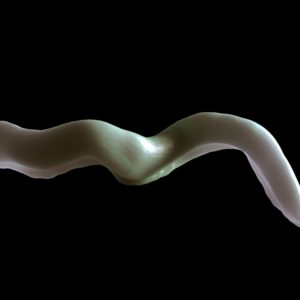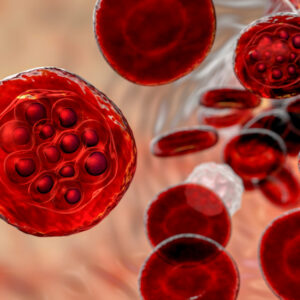PLASMODIUM FALCIPARUM MSP1 PROTEIN, HIS-TAG
Plasmodium falciparum MSP1 is a recombinant MSP1 protein expressed and purified from E. coli.
PRODUCT DETAILS – PLASMODIUM FALCIPARUM MSP1 PROTEIN, HIS-TAG
- Plasmodium falciparum MSP1 produced in E. coli.
- Presented in phosphate buffered saline
- The expressed MSP1 contains a 6xHis-tag and migrates at ~45 kDa in SDS-PAGE.
- Can be used with Plasmodium vivax MSP1 (REC31724) for ELISA and rapid test.
BACKGROUND
Merozoite surface proteins (MSP) are both integral and peripheral proteins found on the membrane of merozoites – an early life cycle stage of the Plasmodia genus. During the asexual blood stage of the Plasmodia life cycle, the Plasmodia parasite invades erythrocytes to replicate, resulting in the characteristic symptoms of malarial infection. The MSP surface protein complexes are involved in multiple interactions between Plasmodium and red blood cells (Kadekoppala and Holder, 2010).
The merozoite surface proteins, 1 and 2 (MSP-1 & MSP-2) are the most abundant proteins on the surface of Plasmodium merozoites, making up 40% of the GPI-anchored protein coat (Cowan, et al., 2011). MSP-1 in particular, is essential in the pathogenesis of Plasmodium’s blood stage, playing a central role in erythrocyte invasion and cell rupture. MSP-1 is synthesized as an approximately 190-kDa precursor protein, which is deposited at the surface of the developing Plasmodia merozoite via a GPI anchor (Kauth, et al., 2003). In late schizogony, prior to erythrocyte invasion, the GPI-anchored MSP-1 precursor protein is processed into four major subunits (Jaschke, et al., 2017). During red blood cell invasion, the merozoite attaches to the host cell using its MSP-1 complex to gain entry. The majority of the complex is then released upon entry into the host cell, but a small portion of the MSP-1 C-terminus, known as MSP-119, is retained. The exact role of MSP-119 remains unknown, but currently serves as a marker for the formation of the food vacuole (Blackman et al., 1990).
The merozoite surface proteins have been major targets for the development of malaria vaccines, with the aim of disrupting Plasmodia at the key stages of its life cycle. MSP-1 also interacts with several other MSPs to form protein complexes, which can all be inhibited by anti MSP-1 antibodies to disrupt parasitic growth. However, the sequences encoding proteins such as MSP-1 vary greatly depending on the region they are found, making them challenging targets.
REFERENCES
- Blackman et al. (1990). A single fragment of a malaria merozoite surface protein remains on the parasite during red cell invasion and is the target of invasion- inhibiting antibodies. J Exp Med. 172(1): 379–382.
- Cowan et al. (2011). A Malaria Vaccine Based on the Polymorphic Block 2 Region of MSP-1 that Elicits a Broad Serotype-Spanning Immune Response. PLoS One. 6(10).
- Jascke, et al. (2017). Merozoite Surface Protein 1 from Plasmodium falciparum Is a Major Target of Opsonizing Antibodies in Individuals with Acquired Immunity against Malaria. Clin Vaccine Immunol. 24(11).
- Kadekoppala and Holder (2010). Merozoite surface proteins of the malaria parasite: The MSP1 complex and the MSP7 family. International Journal for Parasitology. Volume 40, Issue 10, Pages 1155-1161.



